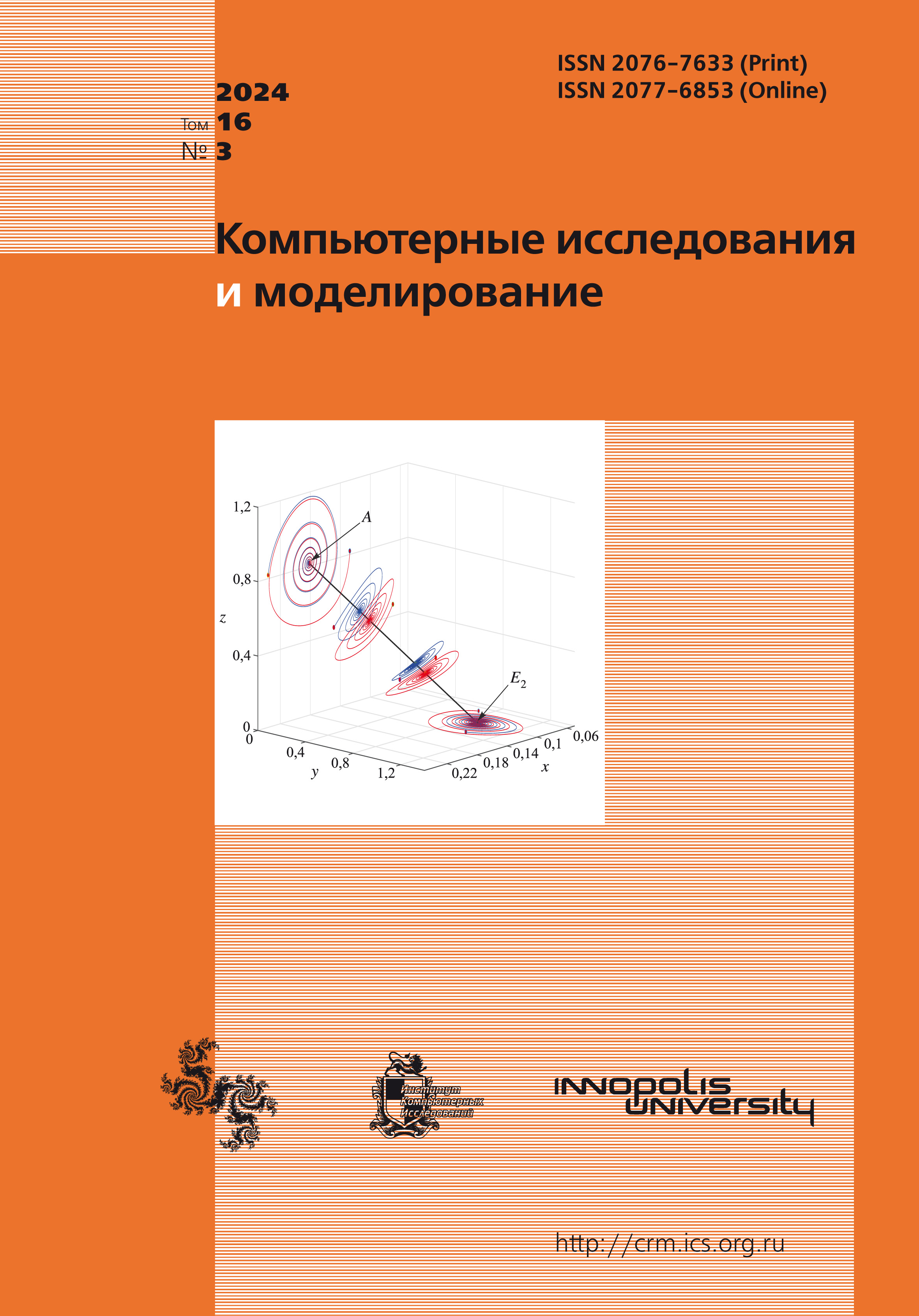All issues
- 2025 Vol. 17
- 2024 Vol. 16
- 2023 Vol. 15
- 2022 Vol. 14
- 2021 Vol. 13
- 2020 Vol. 12
- 2019 Vol. 11
- 2018 Vol. 10
- 2017 Vol. 9
- 2016 Vol. 8
- 2015 Vol. 7
- 2014 Vol. 6
- 2013 Vol. 5
- 2012 Vol. 4
- 2011 Vol. 3
- 2010 Vol. 2
- 2009 Vol. 1
Mathematical features of individual dosimetric planning of radioiodotherapy based on pharmacokinetic modeling
 pdf (258K)
pdf (258K)
When determining therapeutic absorbed doses in the process of radioiodine therapy, the method of individual dosimetric planning is increasingly used in Russian medicine. However, for the successful implementation of this method, it is necessary to have appropriate software that allows modeling the pharmacokinetics of radioiodine in the patient’s body and calculate the necessary therapeutic activity of a radiopharmaceutical drug to achieve the planned therapeutic absorbed dose in the thyroid gland.
Purpose of the work: development of a software package for pharmacokinetic modeling and calculation of individual absorbed doses in radioiodine therapy based on a five-chamber model of radioiodine kinetics using two mathematical optimization methods. The work is based on the principles and methods of RFLP pharmacokinetics (chamber modeling). To find the minimum of the residual functional in identifying the values of the transport constants of the model, the Hook – Jeeves method and the simulated annealing method were used. Calculation of dosimetric characteristics and administered therapeutic activity is based on the method of calculating absorbed doses using the functions of radioiodine activity in the chambers found during modeling. To identify the parameters of the model, the results of radiometry of the thyroid gland and urine of patients with radioiodine introduced into the body were used.
A software package for modeling the kinetics of radioiodine during its oral intake has been developed. For patients with diffuse toxic goiter, the transport constants of the model were identified and individual pharmacokinetic and dosimetric characteristics (elimination half-lives, maximum thyroid activity and time to reach it, absorbed doses to critical organs and tissues, administered therapeutic activity) were calculated. The activity-time relationships for all cameras in the model are obtained and analyzed. A comparative analysis of the calculated pharmacokinetic and dosimetric characteristics calculated using two mathematical optimization methods was performed. Evaluation completed the stunning-effect and its contribution to the errors in calculating absorbed doses. From a comparative analysis of the pharmacokinetic and dosimetric characteristics calculated in the framework of two optimization methods, it follows that the use of a more complex mathematical method for simulating annealing in a software package does not lead to significant changes in the values of the characteristics compared to the simple Hook – Jeeves method. Errors in calculating absorbed doses in the framework of these mathematical optimization methods do not exceed the spread of absorbed dose values from the stunning-effect.
Copyright © 2024 Matveev A.V.
Indexed in Scopus
Full-text version of the journal is also available on the web site of the scientific electronic library eLIBRARY.RU
The journal is included in the Russian Science Citation Index
The journal is included in the RSCI
International Interdisciplinary Conference "Mathematics. Computing. Education"






